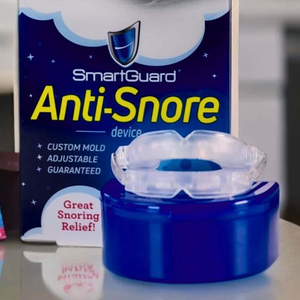Oct 23, 2023
Sleepwalkers or Zombies?
What do the following people have in common?
- A man drove 14 miles to his childhood home of 10 years ago.
- A nurse created beautiful, intricate drawings, but doesn’t consider herself artistic.
- A man slept in his car while it was parked in a ditch.
- An Australian man cooked an entire meal without realizing it.
- An American woman drove 30 miles to a nearby city and didn’t know why.
- A British man painted his entire living room before planning to do it.
- A woman in England was caught eating cat food from the can.
If you guessed that all these people were sleepwalking, you would be correct!
ARE SLEEPWALKERS LIKE ZOMBIES?
Creatively, you might refer to sleepwalkers as the “Undead;” indeed, they are not dead, but they are not conscious, either, so in some ways resemble Hollywood’s zombies. Contrary to opinion though, Zombies are not exactly sleepwalking because of their propensity for violence; and, generally speaking, you need not fear sleepwalkers. Sleepwalkers can do some amazing and bizarre things while unconscious, and there is little definitive explanation for this phenomenon.
WHAT DO SLEEPWALKERS DO?
Besides the actual incidents above, sleepwalkers can do a variety of things. If someone in your house is prone to sleepwalking, you will probably learn two things: how to protect them from hurting themselves or others and what their sleepwalking patterns are. That is, do they tend to roam the streets outside, sit in the bathroom, play the piano; or in the case of the movie, Stepbrothers, do they like to place Mom’s purse in the kitchen oven for safe keeping? Making your house “toddler-safe” may be just the thing to protect your sleepwalker, regardless of their age. Be sure to keep sharp objects and firearms out of reach, and sometimes locking doors is needed.
WHAT CAUSES IT AND HOW TO STOP IT?
The real cause of “somnambulism” (sleepwalking) is not known, but experts point to heredity, stress, sleep deprivation, and medicines like sedatives, antihistamines, and hypnotics.
Embarrassing and dangerous are the two reasons to deal with sleepwalking in intelligent ways. Getting enough sleep on a regular basis can reduce the chances of sleepwalking. Also, a regular sleep schedule is recommended, along with a relaxing routine before bedtime, such as reading or taking a warm bath. Moreover, many experts agree that avoiding alcohol and other drugs can decrease the likelihood for a sleepwalking episode.
Medication can be used to treat sleepwalking, but only after other strategies have been tried or if the sleepwalker tends to put himself or others in harm’s way. Benzodiazepines and certain antidepressants are commonly prescribed to treat sleepwalking. Other medications that reduce anxiety, depression, and enhance sleepiness can help: Clonazepam, Diazepam, Trazodone are a few that have been used to reduce the incidence of sleepwalking.
HOW MANY PEOPLE SLEEPWALK?
Well, a study published in Neurology, a leading journal, indicated that over 8 million Americans sleepwalk each year, and 30% of adults have sleepwalked at least once in their lifetimes.
WHAT ARE PARASOMNIAS?
Sleepwalking is one of the parasomnias (no, not paranormal), strange behaviors that people engage in during sleep. People with parasomnias may wake up enough to carry out complex actions, but not enough to realize what they are doing. These behaviors can occur prior to falling asleep, while asleep, or during the arousal period between sleep and wakefulness. Parasomnias are more common in children than adults, but genetics may play a role in the likelihood of a person’s experiencing parasomnia.
There are three groups of parasomnias: NREM-related, REM-related, and “other.” NREM-related parasomnias occur during the first three stages of the sleep cycle, which are collectively known as NREM sleep. The most common NREM-related parasomnias are known as disorders of arousal. These parasomnias are characterized by episodes of incomplete awakening, limited responsiveness to other people attempting to intervene or redirect the sleeper, and limited awareness during the episode. Most people who experience disorders of arousal have little to no memory of their episodes.
Other examples of parasomnias are night terrors, talking, shouting, punching, or kicking. In the case of night terrors, these can be very upsetting for parents of young children who are crying inconsolably in their sleep. The author recalls carrying the crying child up and down the street outside until the child’s night terror came to a merciful end. Hopefully, we did not wake up the neighbors. The cool air outside and star-lit sky seemed to help.
SUMMARY
In summary, sleepwalking has vague etiology (causation) and affects roughly 30% of American adults at least once in their lifetime. Good sleep habits can reduce the likelihood of episodes. Sleepwalking can be dangerous, so prudent preparation of the environment to reduce hazards is a good idea. If relaxation and regular sleeping habits don’t help, medication can be tried.







